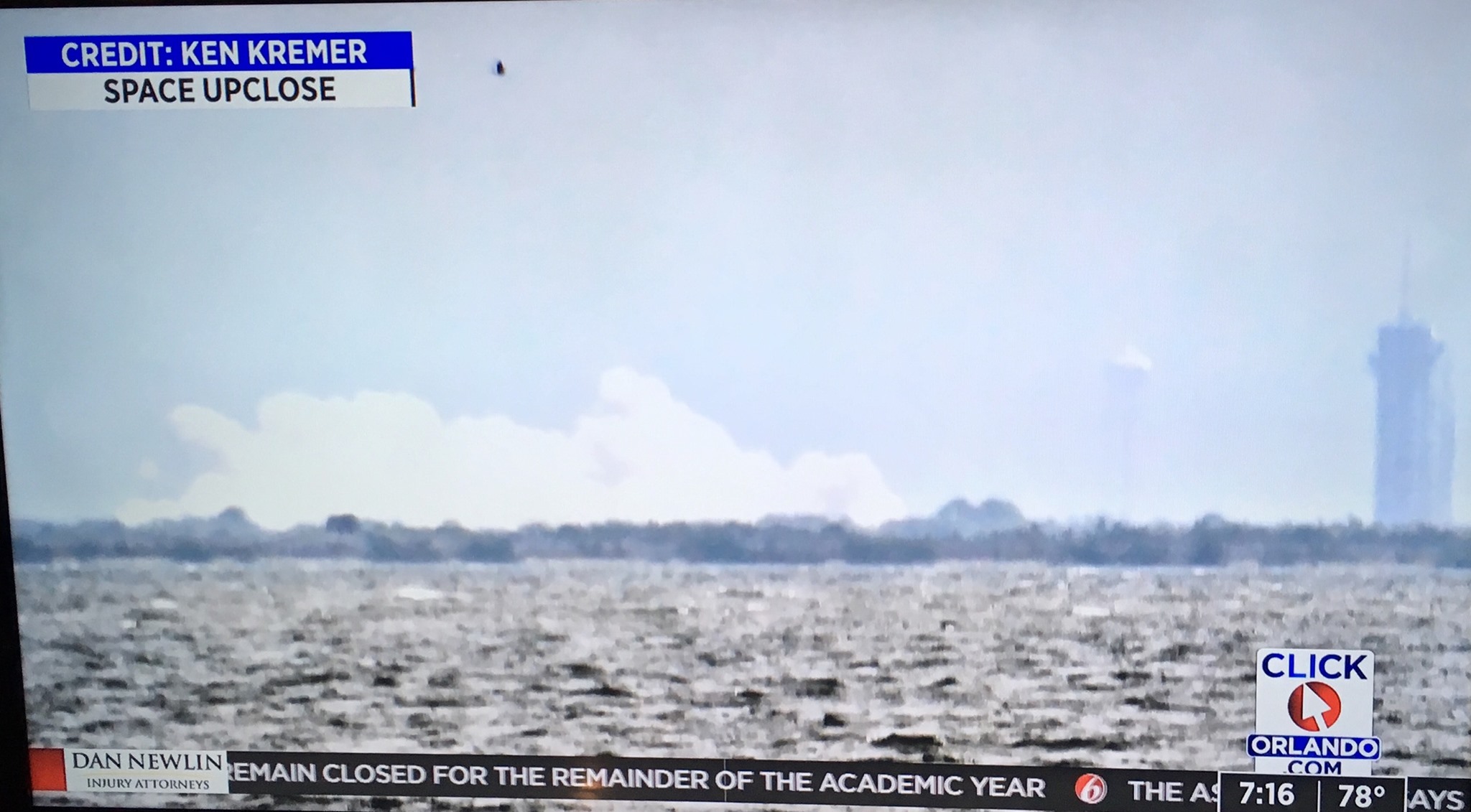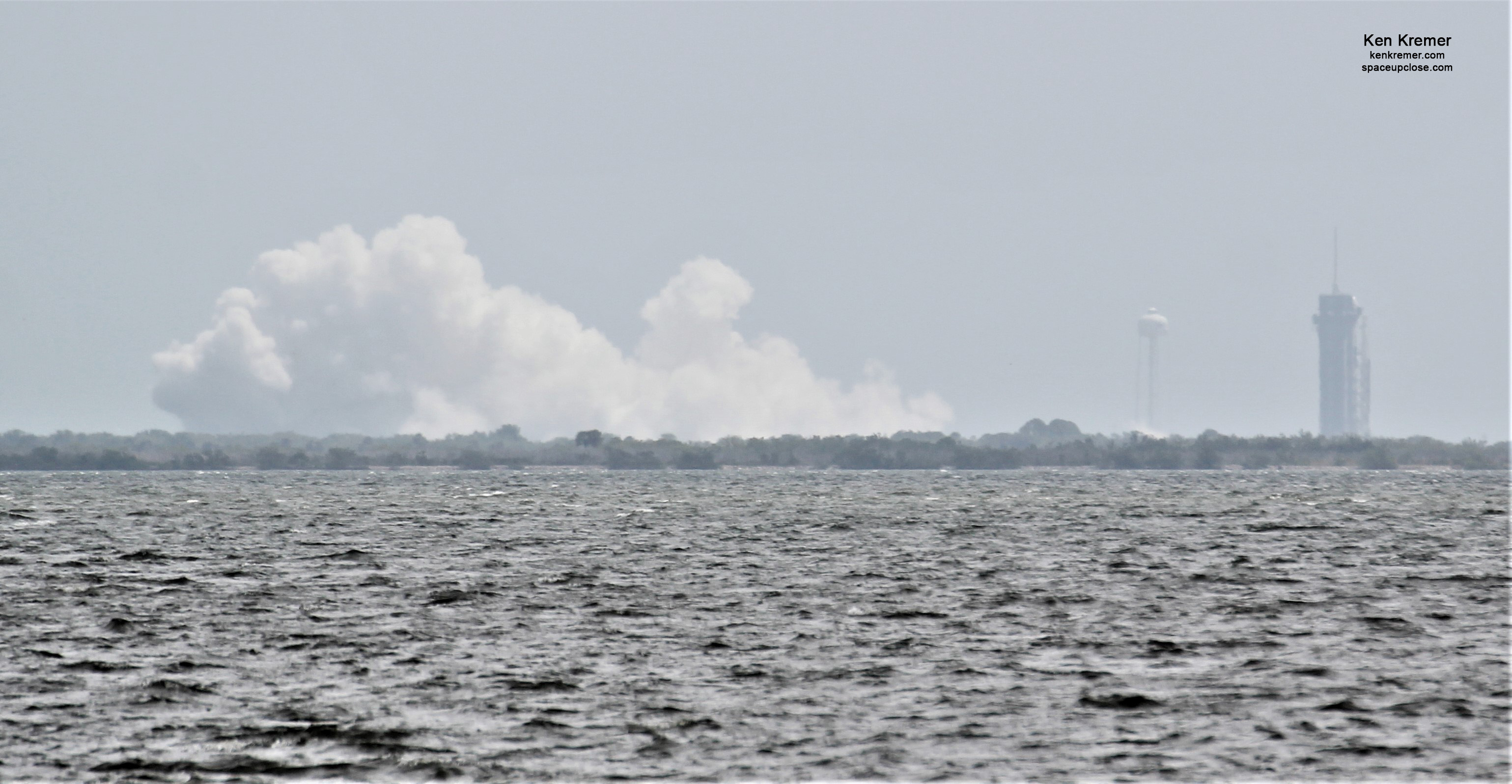
For SpaceUpClose.com & RocketSTEM
TITUSVILLE, FL – SpaceX engineers finally completed a successful lunchtime static fire test of the Falcon 9 first stage engines on Friday, April 17 for the upcoming seventh Starlink launch of broadband internet satellites now targeting Thursday from the Florida Space Coast – amidst the ongoing coronavirus pandemic that has forced closures of public places, schools and travel hubs all across the US and the world – but not forced a rocket cancellation for this mission.
Other rocket launches including those scheduled for the US Air Force have been delayed precisely due to requirements for mitigating the coronavirus that has now claimed the lives of more than 41,000 Americans.
The brief static fire test of the Falcon 9 rocket with the nose cone attached was carried out precisely at 12 Noon (1600 GMT), Friday, April 17 at Launch Complex-39A at NASA’s Kennedy Space Center and appeared to go well.
I watched the noontime engine test Friday from nearby in Titusville, Fl about a dozen miles away across the Indian River lagoon and observed the exhaust plume and vapor cloud emanating from the bottom of the booster.
Enjoy my eyewitness photos of the static fire test at Space UpClose under decent weather conditions with some sun and clouds and haze.

The exhaust was easily visible and wafting overhead and dissipating quickly in the winds about 12 miles away.
About 45 minutes later SpaceX tweeted a confirmation of a good test result.
“Static fire test of Falcon 9 complete—targeting Thursday, April 23 at 3:16 p.m. EDT, 19:16 UTC, for launch of 60 Starlink satellites from LC-39A in Florida,” SpaceX tweeted.
Static fire test of Falcon 9 complete—targeting Thursday, April 23 at 3:16 p.m. EDT, 19:16 UTC, for launch of 60 Starlink satellites from LC-39A in Florida
— SpaceX (@SpaceX) April 17, 2020
The payload comprises the sixth batch of 60 SpaceX built and owned Starlink broadband satellites launching to LEO with an overall mass of about 7.7 tons.
The Falcon 9 was previously used to launch Crew Dragon’s first flight to the ISS, launch of the RADARSAT Constellation Mission, and most recently the fourth Starlink mission in Jan 2020.
The first stage rocket booster supporting this mission previously supported Crew Dragon’s first flight to the @space_station, launch of the RADARSAT Constellation Mission, and the fourth Starlink mission pic.twitter.com/4IMk3kTTaG
— SpaceX (@SpaceX) April 17, 2020
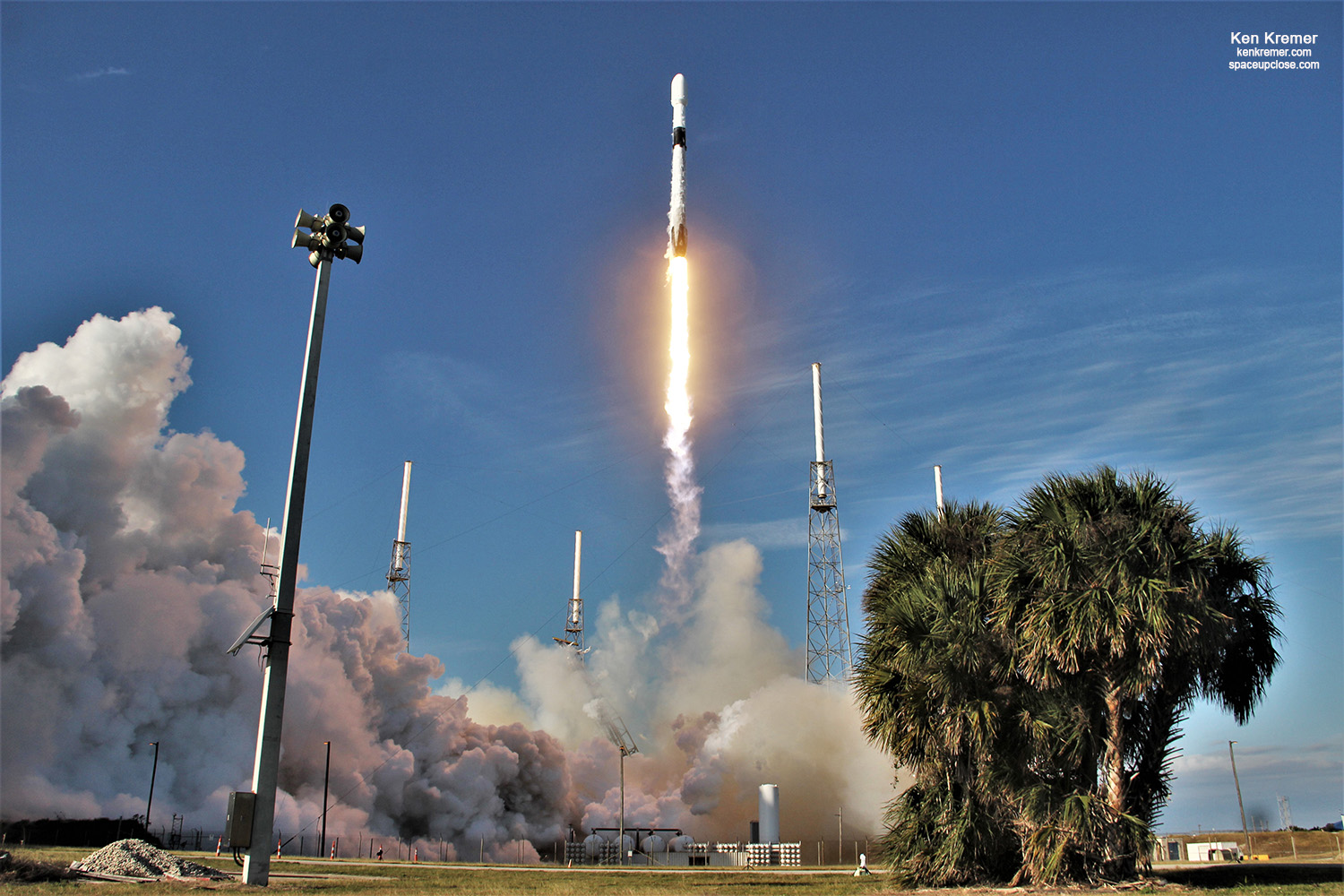
The recycled payload fairings were previously used for the Israeli AMOS-17 mission launched and recovered in August 2019.
One fairing was caught mid-air by the fairing recovery ship as it descended on a parachute. The other was scooped out of the water.
SpaceX CEO Elon Musk says the fairing halves cost about $6 Million to produce new.
The fairing previously supported launch of the AMOS-17 mission in August 2019 pic.twitter.com/1qNaL0uPLh
— SpaceX (@SpaceX) April 17, 2020
The brief hold down hotfire test of the fully integrated SpaceX Falcon 9 first stage rocket and Merlin 1D engines raised vertical took place at Noon Friday and is routinely done to confirm the readiness of the rocket for launch.
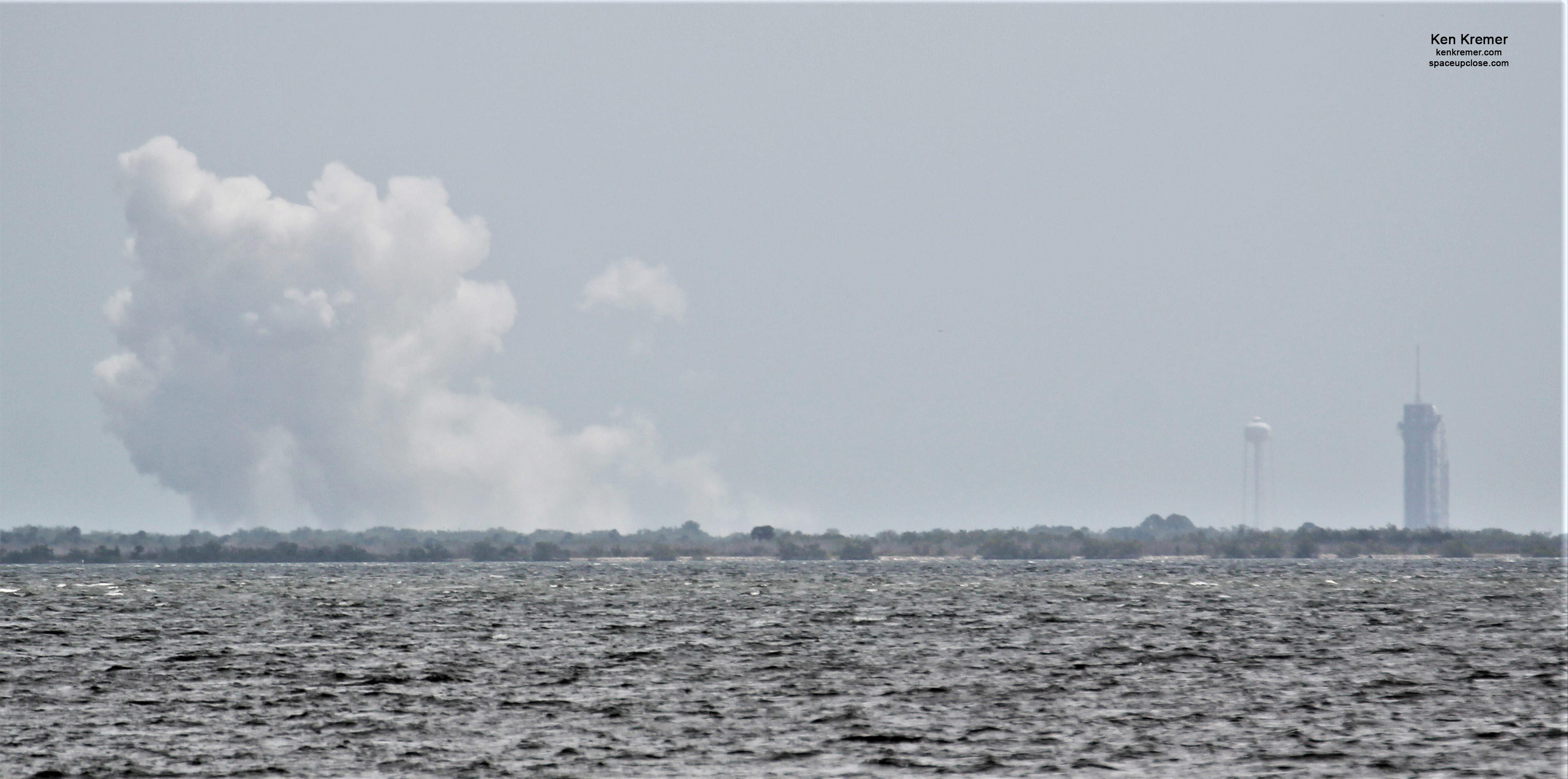
The Starlink fleet of broadband internet satellites in low Earth orbit will grow to some 420 satellites if all goes well.
The two stage Falcon 9 rocket stands 229 feet (70 meters) tall.
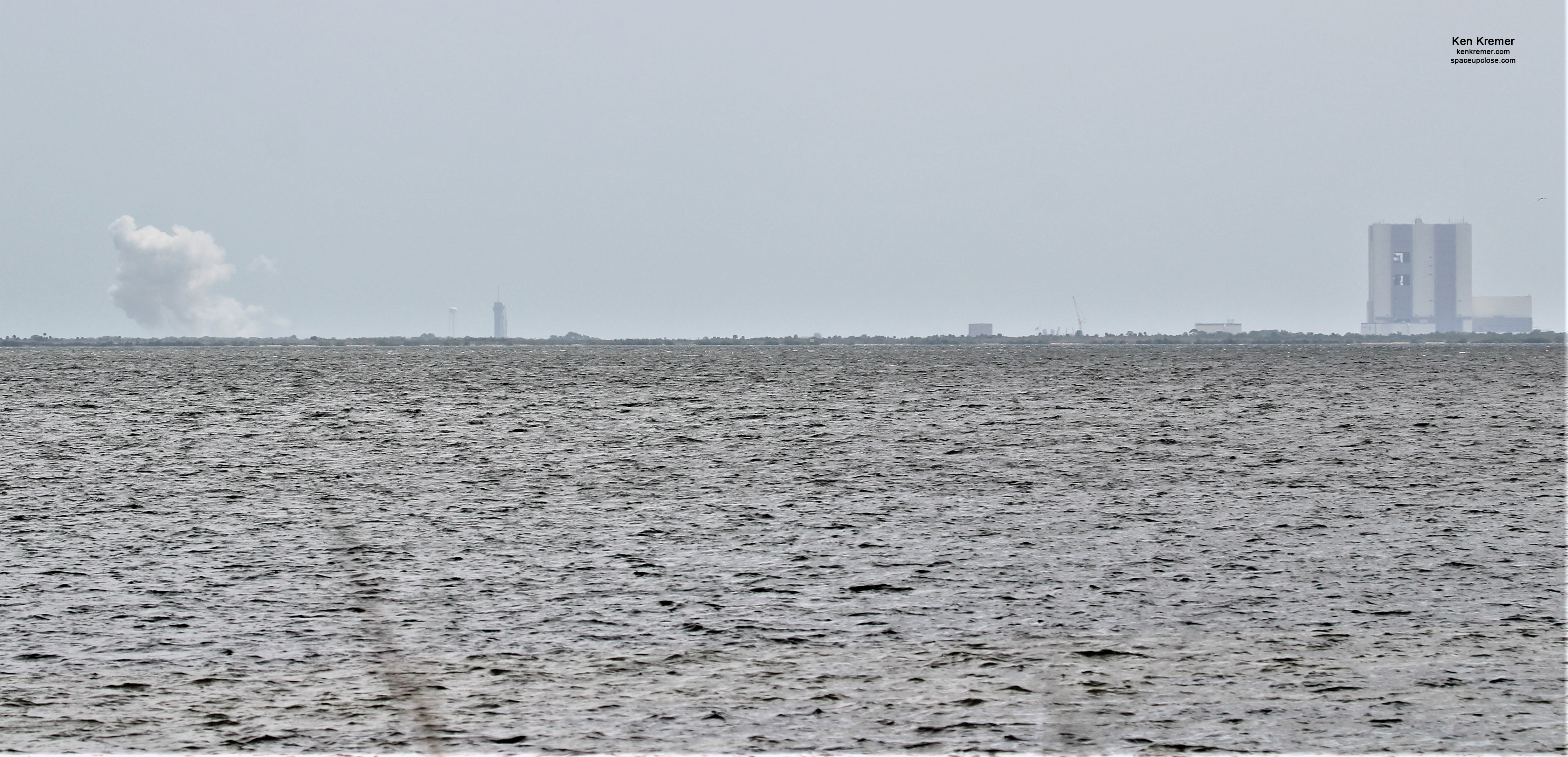
The integrated stack was rolled out from the hangar to pad 39A and raised erect early Thursday morning, April 16.
The window is ‘instantaneous’ meaning any delay for weather or technical reason forces a minimum 1 day scrub.
My SpaceX Starlink static fire photos were featured at WKMG CBS 6 TV News Orlando on Apr 17:
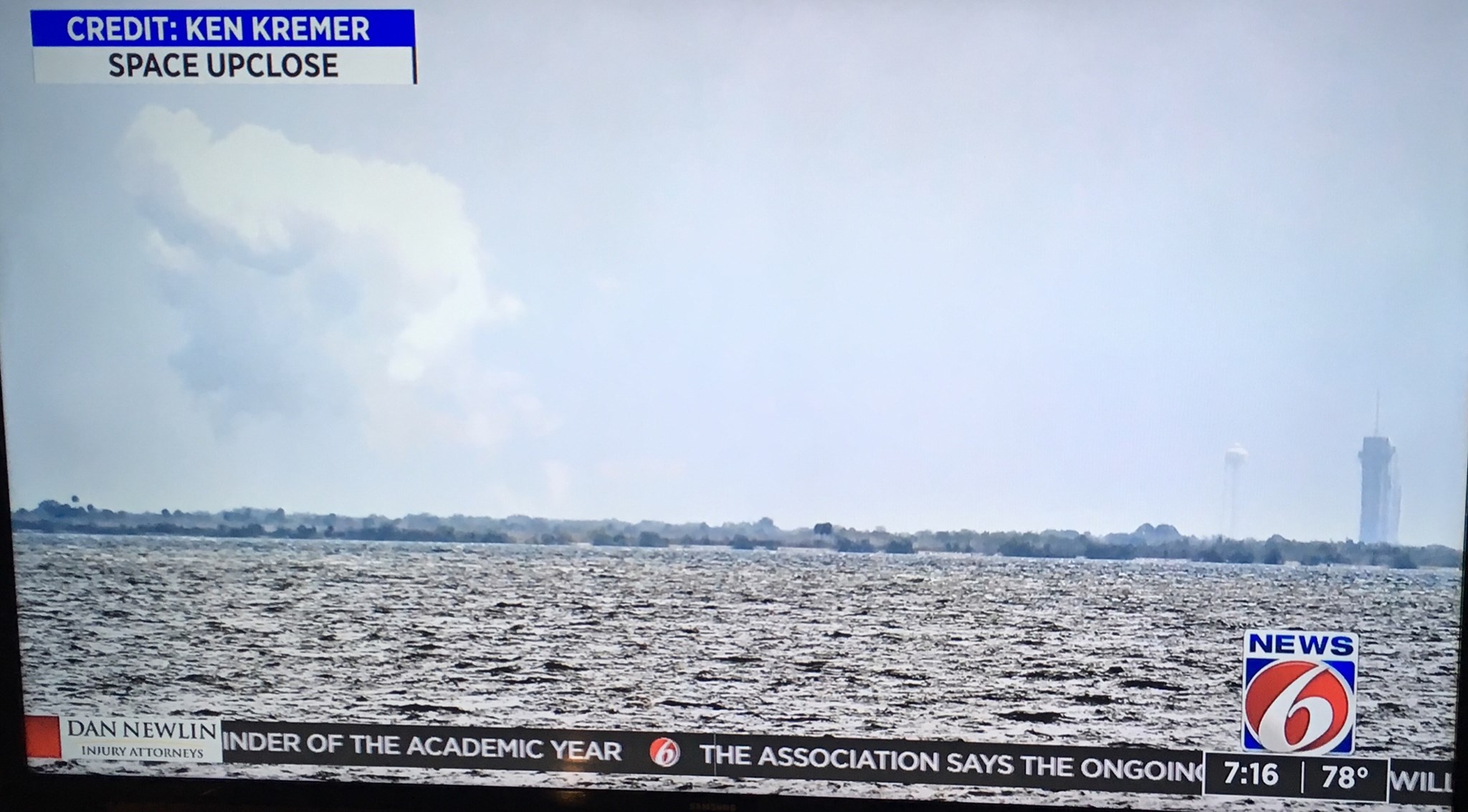
Watch Ken’s continuing reports about onsite for live reporting of upcoming and recent ULA and SpaceX launches including Starlink, Solar Orbiter, In-Flight Abort, Mars 2020 and more at the Kennedy Space Center and Cape Canaveral Air Force Station.
Stay tuned here for Ken’s continuing Earth and Planetary science and human spaceflight news: www.kenkremer.com –www.spaceupclose.com – twitter @ken_kremer – email: ken at kenkremer.com
Dr. Kremer is a research scientist and journalist based in the KSC area, active in outreach and interviewed regularly on TV and radio about space topics.
………….
Ken’s photos are for sale and he is available for lectures and outreach events
